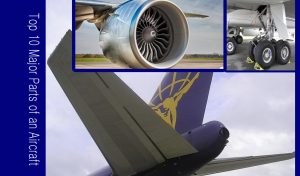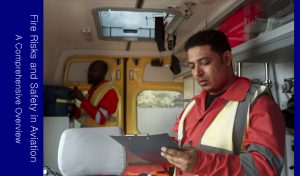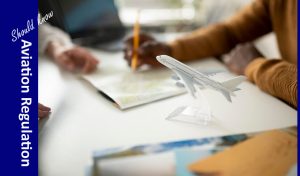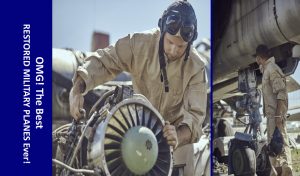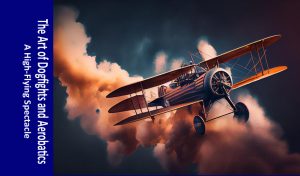Air traffic control (ATC) is a service provided by ground-based air traffic controllers who direct aircraft on the ground and through a given section of controlled airspace, and can provide advisory services to aircraft in non-controlled airspace. Primarily, the Role of Air Traffic Control is to prevent collisions, organize and expedite the flow of air traffic, and provide information and other support for pilots.
ATC plays a vital role in ensuring the safety and efficiency of air travel. Air traffic controllers use a variety of technologies, including radar, computers, and radio communications, to monitor and direct the movement of aircraft. They must be able to think quickly and make sound decisions under pressure, as they are often responsible for the safety of hundreds of people at once.
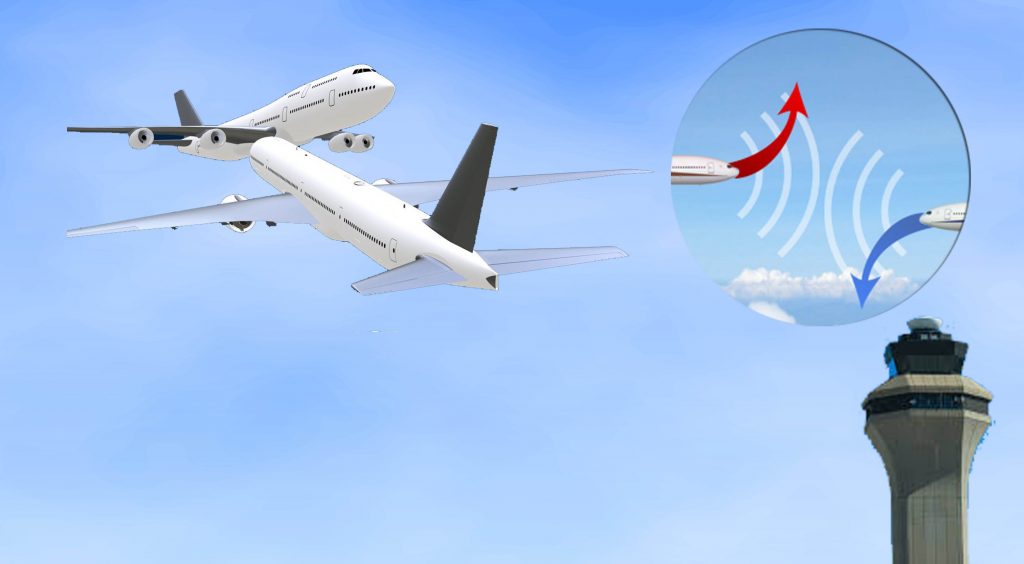
Various role and responsibilities of Air Trafic Control (ATC) in keeping the skies safe and orderly:
1-Preventing collisions
Preventing collisions is the primary responsibility of air traffic controllers (ATCs). ATCs use a variety of tools and techniques to achieve this, including:
- Radar: ATCs use radar to track the location of all aircraft in their airspace. This allows them to identify potential conflicts and issue instructions to pilots to avoid them.
- Separation standards: ATCs maintain separation standards between aircraft. These standards vary depending on the type of aircraft, their altitude, and the type of airspace they are operating in.
- Communication: ATCs communicate with pilots to provide them with instructions and information. This helps pilots to understand the situation and take the necessary action to avoid collisions.
- Procedures: ATCs follow established procedures to maintain order and safety in the airspace. These procedures include things like takeoff and landing procedures, taxiing procedures, and en route procedures.
In addition to these tools and techniques, ATCs also rely on their training and experience to prevent collisions. They must be able to think quickly and make sound decisions under pressure.
Here are some specific examples of how ATCs prevent collisions:
- Sequencing aircraft for takeoff and landing: ATCs sequence aircraft for takeoff and landing to ensure that they maintain a safe distance from each other.
- Issuing instructions to pilots to avoid other aircraft: ATCs may issue instructions to pilots to turn left or right, climb or descend, or change their speed to avoid other aircraft.
- Coordinating with other ATCs: ATCs coordinate with each other to ensure that aircraft are safely transferred from one controller’s airspace to another.
- Providing pilots with information about weather conditions: ATCs provide pilots with information about weather conditions in their airspace. This helps pilots to make safe decisions about their flight path and altitude.
ATCs also work closely with pilots to prevent collisions. Pilots are responsible for following the instructions of ATCs and maintaining a visual lookout for other aircraft.
Preventing collisions is a complex and challenging task, but it is essential to the safety of air travel. ATCs play a vital role in this effort by using their skills, knowledge, and experience to keep the skies safe.
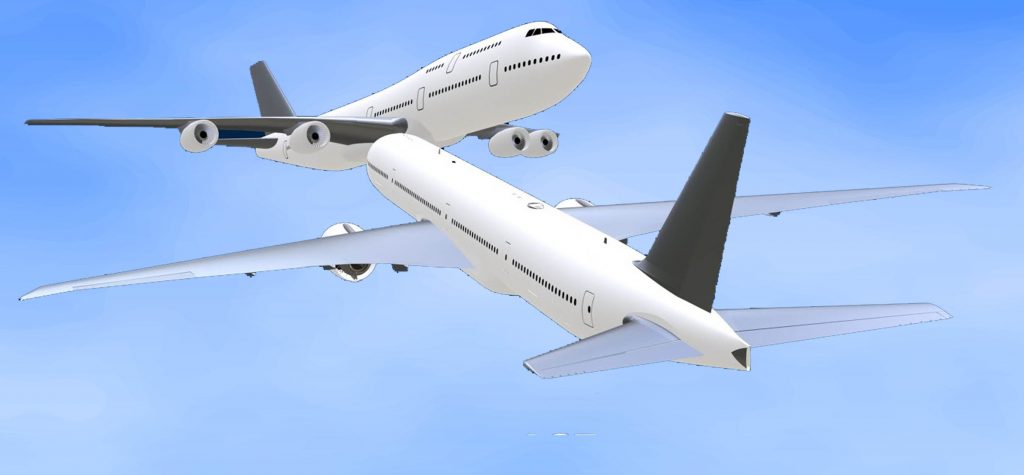
2-Sequencing aircraft
Sequencing aircraft in ATC is the process of determining the order in which aircraft will take off, land, and fly through controlled airspace. This is done to ensure that aircraft maintain a safe distance from each other and to optimize the flow of traffic.
ATCs use a variety of factors to determine the sequence of aircraft, including:
- Type of aircraft: Different types of aircraft have different performance characteristics, such as speed and climb rate. ATCs must take this into account when sequencing aircraft to ensure that they can maintain a safe distance from each other.
- Weight of aircraft: Heavier aircraft need more time to take off and land than lighter aircraft. ATCs must also take this into account when sequencing aircraft.
- Weather conditions: Weather conditions can affect the performance of aircraft and the ability of ATCs to see and track aircraft. ATCs must take weather conditions into account when sequencing aircraft to ensure that they can operate safely.
- Other traffic: ATCs must also consider the other traffic in the area when sequencing aircraft. For example, ATCs may need to sequence aircraft to avoid potential conflicts with other aircraft or with ground vehicles.
ATCs use a variety of tools and techniques to sequence aircraft, including:
- Radar: ATCs use radar to track the location of all aircraft in their airspace. This allows them to see where aircraft are and to predict where they will be in the future.
- Flight plans: ATCs use flight plans to determine the intended route and altitude of each aircraft. This helps them to sequence aircraft in a way that minimizes conflicts.
- Communication: ATCs communicate with pilots to provide them with instructions and information. This helps pilots to understand the situation and to take the necessary action to maintain a safe sequence.
Sequencing aircraft is a complex and challenging task, but it is essential to the safety and efficiency of air travel. ATCs play a vital role in this effort by using their skills, knowledge, and experience to keep the skies safe and orderly.
Here are some specific examples of how ATCs sequence aircraft:
- Sequencing aircraft for takeoff: ATCs sequence aircraft for takeoff to ensure that they maintain a safe distance from each other and to avoid runway congestion. ATCs may also sequence aircraft to take advantage of favorable wind conditions.
- Sequencing aircraft for landing: ATCs sequence aircraft for landing to ensure that they maintain a safe distance from each other and to avoid runway congestion. ATCs may also sequence aircraft to land in a way that minimizes noise disturbance to communities near the airport.
- Sequencing aircraft in en route airspace: ATCs sequence aircraft in en route airspace to ensure that they maintain a safe distance from each other and to optimize the flow of traffic. ATCs may also sequence aircraft to avoid bad weather or other hazards.
Sequencing aircraft is a dynamic process, and ATCs must constantly monitor the situation and make adjustments as needed. ATCs work closely with pilots to ensure that aircraft are sequenced safely and efficiently.
3-Providing weather information
Providing weather information in ATC is the process of providing pilots with information about weather conditions in their airspace. This information can include things like the location of thunderstorms, the severity of turbulence, and the presence of icing conditions.
ATCs use a variety of sources to get weather information, including:
- National Weather Service (NWS): The NWS is the primary source of weather information for ATCs. The NWS provides ATCs with a variety of weather products, including forecasts, advisories, and warnings.
- Automated Weather Observing System (AWOS): AWOS stations are located at airports and other locations throughout the country. They provide ATCs with real-time weather observations, such as wind speed and direction, temperature, and visibility.
- Pilot reports: Pilots also play a role in providing weather information to ATCs. Pilots can report weather conditions that they encounter in flight. This information can be used by ATCs to update weather forecasts and advisories.
ATCs use weather information to provide pilots with the information they need to make safe decisions about their flight path and altitude. For example, ATCs may advise pilots to avoid flying through thunderstorms or to climb or descend to avoid icing conditions.
Providing weather information is an important part of ATC’s responsibility to ensure the safety of air travel. ATCs use a variety of sources to get weather information and they work closely with pilots to keep them informed of the latest weather conditions.
Here are some specific examples of how ATCs provide weather information to pilots:
- Air traffic advisories (AIRMETs): AIRMETs are issued by the NWS to provide pilots with information about significant weather conditions that could affect their flight. ATCs broadcast AIRMETs to pilots in their airspace.
- Significant meteorological information (SIGMETs): SIGMETs are issued by the NWS to provide pilots with information about severe weather conditions that could pose a hazard to their flight. ATCs broadcast SIGMETs to pilots in their airspace.
- Pilot reports: When pilots encounter hazardous weather conditions in flight, they are required to report these conditions to ATC. ATCs then broadcast these reports to other pilots in the area.
- Direct communication with pilots: ATCs can also communicate directly with pilots to provide them with weather information. For example, an ATC may advise a pilot to avoid a particular area of bad weather or to climb or descend to avoid icing conditions.
By providing pilots with accurate and timely weather information, ATCs can help pilots to make safe decisions about their flight path and altitude. This helps to ensure the safety of air travel for everyone involved.
4-Handling emergencies
Handling emergencies in ATC is the process of responding to and resolving aircraft emergencies. Aircraft emergencies can range from minor problems, such as a mechanical failure, to serious problems, such as an engine fire or a structural failure.
ATCs are trained to handle a variety of aircraft emergencies. They use a variety of tools and techniques to respond to emergencies, including:
- Radar: ATCs use radar to track the location and movement of aircraft in their airspace. This allows them to identify aircraft that may be in distress and to provide assistance.
- Communication: ATCs communicate with pilots to provide them with instructions and information. This helps pilots to understand the situation and to take the necessary action to resolve the emergency.
- Procedures: ATCs follow established procedures to handle aircraft emergencies. These procedures include things like emergency descent procedures, engine failure procedures, and fire procedures.
ATCs also work closely with other emergency services, such as fire departments and medical personnel, to ensure that aircraft emergencies are resolved safely and efficiently.
Here are some specific examples of how ATCs handle emergencies:
- Engine failure: If an aircraft experiences an engine failure, the ATC will work with the pilot to identify a safe place to land. The ATC may also provide the pilot with information about weather conditions and other factors that could affect the landing.
- Fire: If an aircraft experiences a fire, the ATC will work with the pilot to identify a safe place to land. The ATC may also provide the pilot with instructions on how to extinguish the fire.
- Medical emergency: If a passenger or crew member on an aircraft experiences a medical emergency, the ATC will work with the pilot to identify a safe place to land. The ATC may also provide the pilot with information about the nearest medical facilities.
Handling emergencies is a complex and challenging task, but it is essential to the safety of air travel. ATCs play a vital role in this effort by using their skills, knowledge, and experience to keep the skies safe.
Overview
ATC is a complex and demanding profession, but it is also one of the most important in the aviation industry. ATC controllers play a critical role in ensuring the safety and efficiency of air travel for millions of people every day.
In addition to the above, ATC also plays a role in keeping the skies orderly by:
- Ensuring that aircraft adhere to flight plans: This helps to prevent aircraft from flying into restricted airspace or colliding with each other.
- Coordinating with other air traffic controllers: This helps to ensure that aircraft are safely and efficiently transferred from one controller’s airspace to another.
- Providing information to pilots: ATC controllers provide pilots with a variety of information, such as their location, the distance to their destination, and the estimated time of arrival. This helps pilots to fly safely and efficiently.
Overall, ATC plays a vital role in keeping the skies safe and orderly. ATC controllers are highly skilled professionals who play a critical role in the aviation industry.
